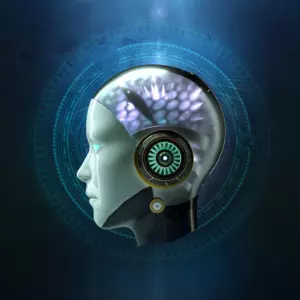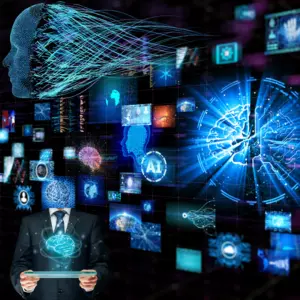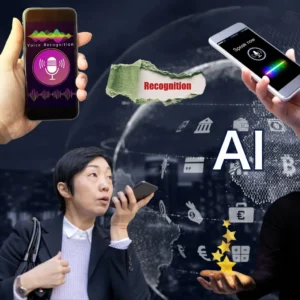
Reimagining Rules
AI's Influence on Education Policy
In the ever-evolving landscape of education, the role of AI is catalyzing transformative change.
This article, “Reimagining Rules: AI’s Influence on Education Policy,” delves into the dynamic intersection of artificial intelligence and education policy.
We’ll unravel how AI shapes education policies, evaluates their real-world impact, and even proposes innovative reforms backed by data-driven insights. Join us through education system analytics, global comparisons, and predictive models that guide future educational trajectories.
Discover how AI chatbots streamline policy feedback and how collaborative AI tools craft policies that resonate with diverse stakeholders. Together, we’ll celebrate successful AI-backed education reforms and chart the roadmap for the future of education.
Table of Contents

Arindam Roy
An Automation Consultant with 25+ years of IT Experience
Crafting Policy with AI Insights
In the realm of education policy, AI serves as a potent ally in the policymaking process. By harnessing AI insights, policymakers gain a data-driven edge. AI analyzes vast datasets, identifying trends, gaps, and potential pitfalls.
It aids in formulating policies that are well-informed and adaptable to changing educational landscapes. These insights empower policymakers to tailor solutions to specific challenges, resource allocation, curriculum reforms, or equitable access.
AI-driven policy crafting fosters more efficient, targeted, and impactful reforms, ushering in an era where education policies are not just decisions but finely tuned strategies for a brighter educational future.
Evaluating the Real-World Impact of Policies
In the ever-evolving educational landscape, assessing the tangible effects of policies is paramount. AI, with its robust analytical capabilities, plays a pivotal role. It allows for real-time monitoring and evaluation of policy implementations.
Through machine learning, AI scrutinizes diverse data sources to gauge the impact on students, teachers, and institutions. This data-driven evaluation goes beyond traditional metrics, considering student performance, engagement, and teacher satisfaction.
Such comprehensive insights enable swift adjustments and refinements, ensuring policies are well-intentioned and compelling. With AI, education policymakers can fine-tune their strategies, making informed decisions that transform the educational experience.
Deep Diving into Education System Analytics
AI-powered education system analytics offer an unparalleled opportunity to uncover hidden insights. AI algorithms explore intricate educational data, identifying patterns, strengths, and weaknesses within systems.
These analyses go beyond surface-level observations, providing a profound understanding of what works and needs improvement. From student performance trends to resource allocation efficiency, AI-driven analytics offer a comprehensive view.
By delving deep into these insights, policymakers gain the ability to make well-informed decisions. This informed decision-making process can lead to tailored strategies that maximize the potential of educational systems, ultimately benefiting students, teachers, and communities at large.
In this data-driven age, deep education system analytics are the key to unlocking transformative education policy and practice improvements.
Reform Proposals Backed by AI Data
Education reform efforts gain substantial momentum when bolstered by AI’s data-driven precision. AI algorithms sift through vast educational datasets, identifying areas needing improvement and potential solutions.
These proposals are rooted in empirical evidence, ensuring that reforms are not mere conjecture but informed strategies. AI also predicts the possible outcomes of proposed reforms, allowing policymakers to weigh the risks and benefits before implementation.
In this way, AI acts as a reliable compass, guiding the formulation of effective and sustainable reform policies. By harnessing AI data, education stakeholders can foster meaningful changes that resonate with the needs and aspirations of students and educators alike, ultimately shaping a brighter future for education.
Comparing Education Systems with AI
AI’s prowess in comparing education systems transcends traditional methods. It enables precise, data-driven comparisons that consider a multitude of factors.
AI algorithms meticulously analyze the curricula, teaching methods, student outcomes, and resource allocation across different systems. These comparisons provide policymakers invaluable insights into what works best in various contexts.
Whether evaluating the efficiency of education reforms or identifying opportunities for improvement, AI-driven comparisons offer a nuanced understanding of global educational landscapes.
By harnessing AI, education policymakers can make informed decisions, adapting successful practices from one system to another, ultimately fostering a more equitable and effective educational environment for students worldwide.
Predicting Future Education Trajectories
AI’s predictive capabilities have the potential to revolutionize education by foreseeing future trends and challenges.
By analyzing historical data and current educational patterns, AI constructs predictive models that forecast the trajectory of education systems. These models can anticipate shifts in student demographics, emerging skill requirements, and the impact of technological advancements.
By utilizing these insights, policymakers can proactively shape education policies, develop curricula, and allocate resources to meet the changing needs of students and the workforce. Predictive models powered by AI provide
- a forward-looking lens,
- enabling education systems to adapt and thrive in an ever-changing landscape,
- ensuring that students are well-prepared for the challenges and opportunities of tomorrow.
Gathering Public Feedback Efficiently
Public feedback is crucial in education policy, and AI offers an efficient solution. AI chatbots streamline the process by engaging with stakeholders, including students, parents, and teachers, in real-time conversations.
These chatbots are equipped with natural language processing, allowing them to understand and respond to a wide range of feedback. They collect valuable insights, concerns, and suggestions from the public on various aspects of education. AI-driven sentiment analysis helps filter the sentiments of large groups efficiently.
This wealth of data enables policymakers to make informed decisions that reflect the diverse perspectives and needs of the education community, ultimately fostering more inclusive and effective education policies.
Collaboration in Policy Design
Collaboration is essential in the dynamic landscape of education policy, and AI-powered tools transform how stakeholders work together. Collaborative AI platforms facilitate seamless cooperation among educators, policymakers, researchers, and communities.
These tools provide a shared digital space for brainstorming, data sharing, and policy drafting. With AI, stakeholders can analyze vast datasets collectively and generate evidence-based proposals. Moreover, real-time collaboration ensures policies are agile and adaptable to emerging challenges.
AI-driven collaboration fosters inclusivity, harnessing the collective intelligence of diverse voices to craft policies that resonate with the education community. It’s a powerful synergy that paves the way for more effective and equitable education reforms.
Crafting the Roadmap for the Future of Education
In the age of AI, crafting the roadmap for the future of education is a collaborative endeavour driven by data and innovation. AI’s ability to analyze vast datasets, predict trends, and gather insights from diverse stakeholders empowers education policymakers to design forward-thinking strategies.
These roadmaps focus on personalized learning, equitable access, and adaptability to the evolving needs of the workforce. They envision education as a dynamic, lifelong journey that prepares students for a rapidly changing world.
With AI’s guidance, education’s future is poised to be inclusive, technologically advanced, and tailored to every learner’s unique strengths and aspirations, ensuring a brighter tomorrow for all.
Celebrating Successful AI-Backed Education Reforms
The integration of AI in education policies has yielded remarkable success stories. AI-backed reforms have improved student outcomes, enhanced teacher support, and streamlined administrative processes.
These achievements are worth celebrating as they signify a shift toward data-driven, innovative, and practical education policies. We acknowledge AI’s potential to transform education and inspire innovation and adoption by spotlighting these successes.
Celebrating these achievements serves as a beacon, guiding policymakers and educators towards a future where AI continues to play a pivotal role in shaping an education system that equitably prepares students for the challenges of the modern world.
Conclusion
In education policy and reform, AI has emerged as a transformative force. From crafting well-informed policies backed by data-driven insights to predicting future trajectories and fostering collaboration, AI reshapes how we approach education.
It allows us to celebrate successful reforms and, most importantly, craft a roadmap for the future of education that is inclusive, innovative, and responsive to the ever-changing needs of students and society. With AI as our ally, the end of teaching holds the promise of equitable access and excellence for all.
Related Articles
- Beyond Books: AI in Shaping Modern Curricula
- AI in Educational RND: Pioneering Paths
- Tailored Teachings: AI in Support Need Education
- Smart Schools: AI in Educational Management
- Intelligent Intake: AI in College Admissions
- Never Stop Learning: AI’s Boost in Adult Education
- Digital Desks: AI’s Footprint in Modern Classrooms
- Virtual Varsity: AI in E-Learning Platforms
- Smart Choices: AI in Global Education Counselling
- AI in language learning apps: Chatbots to Culture
- AI-Driven Tutoring Platforms: 24/7 Tutors
- Play to Learn: AI Transforming Educational Games
- Scoring with Systems: AI in Exam Prep
- Tiny Tots, Big Tech: AI’s Role in Preschool Education
- Classroom Companions: AI Tools for K-12 Education
- AI-driven EdTech Solutions: Revolutionizing EdTech Investment and Engagement
- Learning Never Stops: AI’s Impact on Continuous Education
- Skill & Scale: AI in Vocational and Technical Training
- Campus to Computer: AI in Virtual Learning in Higher Education
- Digital Transformation in Education: 5 Areas Where Process Automation Takes the Lead
- Other Articles on AI Usage in Education
- Other Articles on AI usage in other industries























